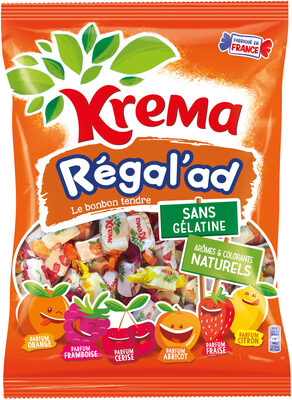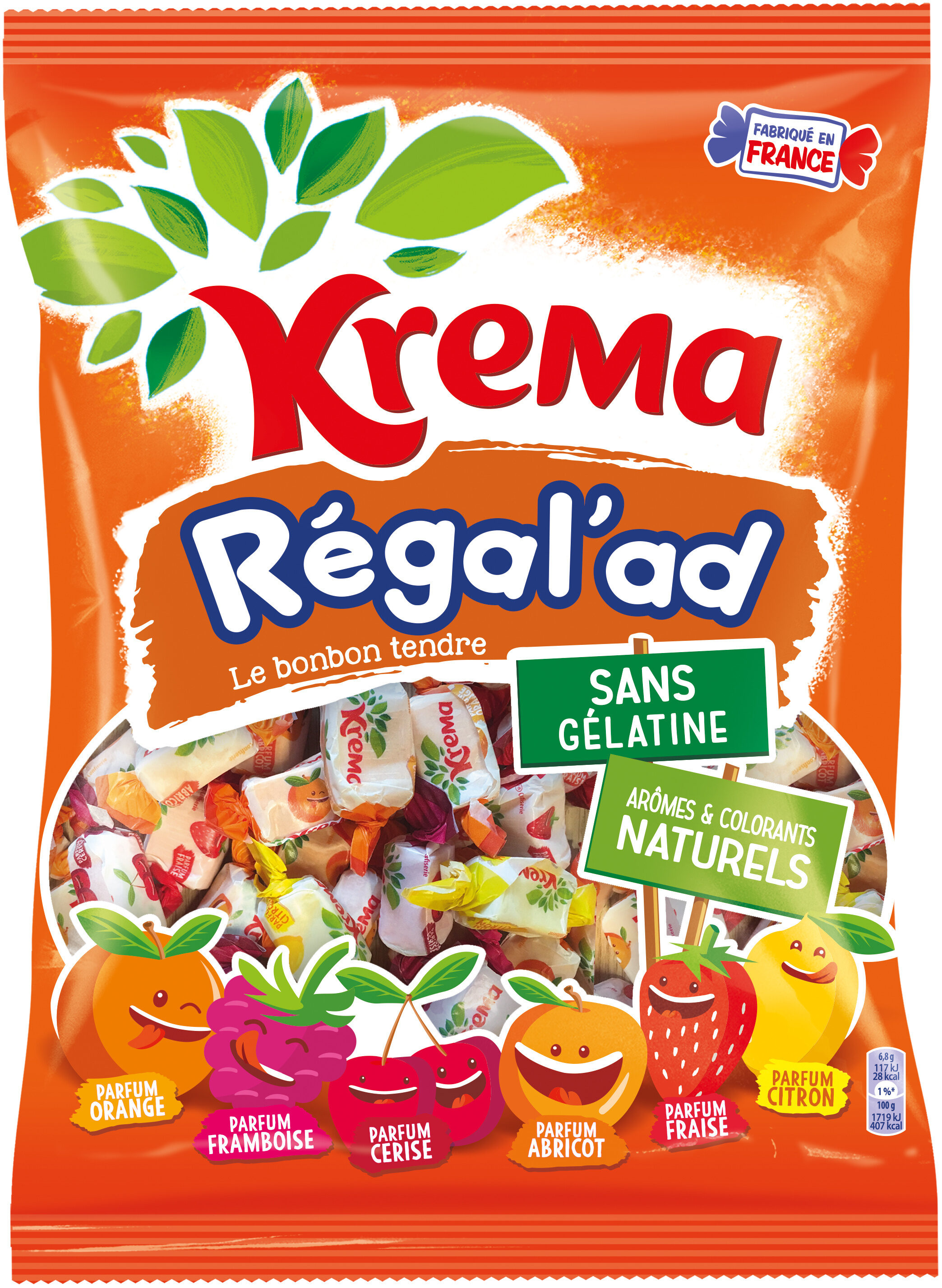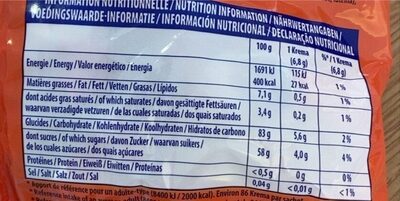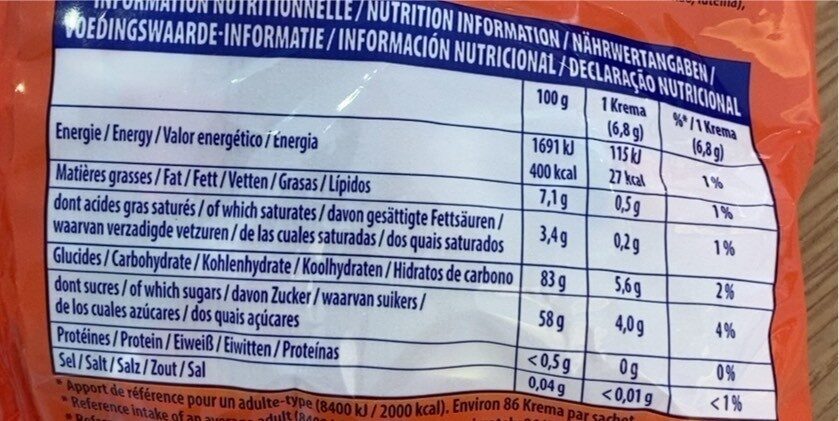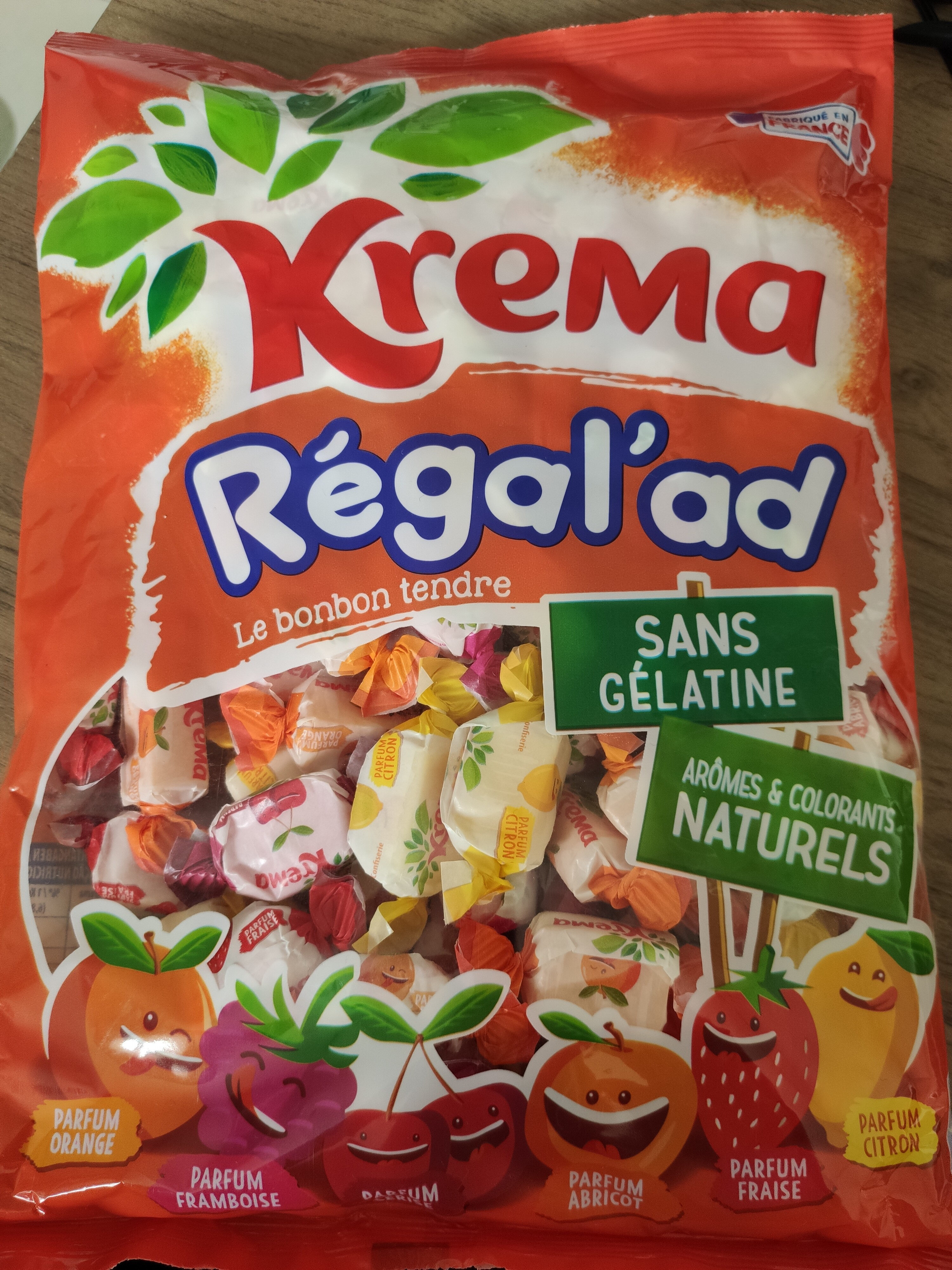Regal'ad - Krema - 590 g
This product page is not complete. You can help to complete it by editing it and adding more data from the photos we have, or by taking more photos using the app for Android or iPhone/iPad. Thank you!
×
Some of the data for this product has been provided directly by the manufacturer Carambar & Co.
Barcode: 3664346307062 (EAN / EAN-13)
Common name: Confiseries aromatisées - Parfums assortis.
Quantity: 590 g
Packaging: fr:Sachet en plastique, fr:Sachet plastique
Brands: Krema
Categories: Snacks, Sweet snacks, Confectioneries, Candies
Labels, certifications, awards: Made in France, Natural colorings, Natural flavors, No gelatin
Manufacturing or processing places: France
Stores: Magasins U, Carrefour, carrefour.fr, Leclerc
Countries where sold: France
Matching with your preferences
Other information
Conservation conditions: A conserver à l'abri de la chaleur et de l'humidité.
Customer service: Service Consommateur Carambar & Co, Nos services sont ouverts du lundi au vendredi de 09h00 à 19h00
Report a problem
Data sources
The manufacturer Carambar & Co uses CodeOnline Food to automatically transmit data and photos for its products.
Manufacturers can use the Open Food Facts free plaform for producers to access and complete this data, and to obtain reports, analysis and product improvements opportunities (e.g. better Nutri-Score).
Product added on by kiliweb
Last edit of product page on by inf.
Product page also edited by bouladou-1990, chevalstar, driveoff, ecoscore-impact-estimator, gyrostat, llefevere, magasins-u, matmat, mrhalal, openfoodfacts-contributors, org-carambar-co, packbot, quechoisir, roboto-app, yuka.EpUTMY-OB858RfTe3d435AWQCNfEW_9wE1Ihow, yuka.Ub5LYsLWMOI5NsH7-6QZ3hmeJbj-JdZAKmMhow, yuka.WW9jTkZvMVFtYVFVcE0wTTJCRHM2UHdwd3AyRlZ6K3BLZkk3SVE9PQ, yuka.sY2b0xO6T85zoF3NwEKvlhVeY-HmnB39bQDfpxTTzNaXFMTpT_YvzoTWKqs, yuka.sY2b0xO6T85zoF3NwEKvlkwWC_3MqRebKjHgl0O2nc-ica6ze_xC2bnhIqg, yuka.sY2b0xO6T85zoF3NwEKvlnB_dvPTjAr6aRX4xmm799OnHq7aSOos5Y3zPas.
